How to Measure Customer Service Performance Effectively
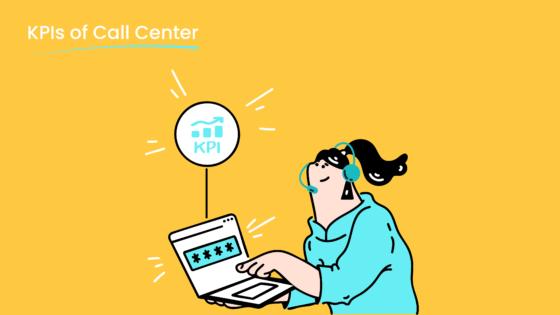
Understanding how to measure customer service performance is essential for improving both customer satisfaction and operational efficiency. Metrics like the customer satisfaction score (CSAT), net promoter score (NPS), and first response time (FRT) provide actionable insights into your service quality. For instance, a lower average resolution time reduces customer wait times, enhancing efficiency and satisfaction. Similarly, higher CSAT scores often correlate with increased customer loyalty and spending.
Sobot's Voice/Call Center offers tools to track these customer service metrics effectively. Features like real-time monitoring and intelligent call routing ensure seamless data collection and analysis. By leveraging these capabilities, you can optimize your processes and deliver exceptional service experiences.
Why Measuring Customer Service Performance Matters
Enhancing Customer Satisfaction and Loyalty
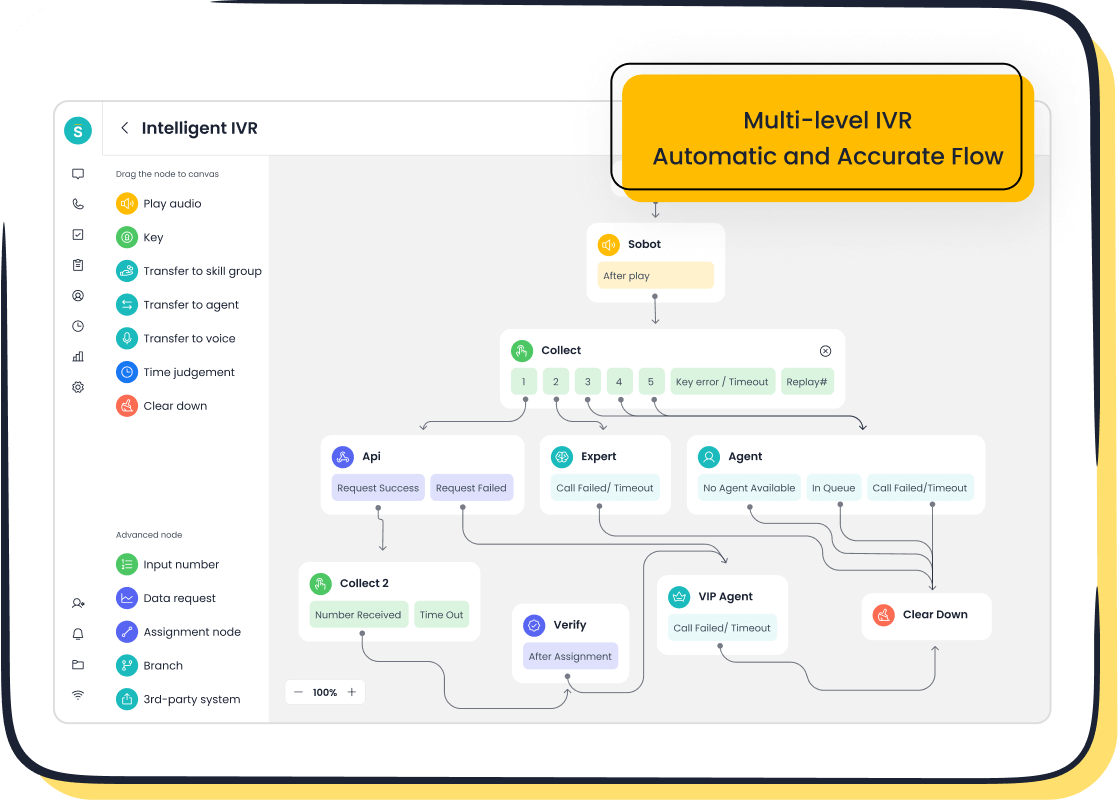
Measuring customer service performance is vital for enhancing satisfaction and loyalty. When you track customer service metrics like the Customer Satisfaction Score (CSAT), you gain insights into how well your service meets customer expectations. Satisfied customers are more likely to remain loyal, and retaining them is cost-effective. In fact, acquiring new customers can cost up to five times more than keeping existing ones. Moreover, companies focusing on retention are 60% more profitable. By understanding customer feedback, you can improve service delivery, leading to higher satisfaction and loyalty. Sobot's solutions, such as the Voice/Call Center, help you monitor these metrics effectively, ensuring you deliver exceptional customer experiences.
Driving Business Growth and Retention
Improved customer service performance directly impacts business growth and retention. Businesses that personalize customer interactions see a 70% increase in satisfaction. This personalized approach not only enhances the customer experience but also boosts retention rates. For example, Carrefour Kenya's Queue Management System eliminated long queues, increasing satisfaction and sales. Similarly, the Saudi Business Center's partnership with Wavetec reduced wait times by 30%, enhancing service quality. These examples show how prioritizing customer service can drive growth. By using customer service metrics, you can identify areas for improvement and tailor your services to meet customer needs, ultimately boosting your retention rate.
Identifying Operational Inefficiencies
Identifying operational inefficiencies is another reason to measure customer service performance. Metrics highlight areas needing improvement, such as agent training or process adjustments. For instance, understanding where agents struggle can guide targeted training, improving efficiency. A table of evidence shows that higher customer satisfaction correlates with increased revenue and reduced costs. Customers with strong brand connections are less price-sensitive and more likely to convert. By focusing on these metrics, you can streamline operations, reduce costs, and enhance satisfaction. Sobot's Omnichannel Solution provides the tools needed to analyze these metrics, helping you optimize your operations and improve customer satisfaction.
Aligning Customer Service Goals with Business Objectives
Aligning customer service goals with your business objectives ensures that every interaction with your customers contributes to your broader success. When your customer service strategy reflects your business priorities, you create a seamless experience that drives measurable outcomes.
A study from HubSpot indicates that 93% of customers are likely to make repeat purchases with companies that provide excellent customer service. Additionally, a Salesforce study found that 89% of consumers are more likely to make another purchase after a positive customer service experience.
To align your customer service goals effectively, start by understanding your business objectives. For example:
- If your goal is to expand market share, focus on attracting and retaining customers through exceptional support.
- If you aim to increase revenue, prioritize reducing customer churn by improving satisfaction and loyalty.
A structured approach can help you achieve this alignment:
- Set business goals that reflect customer priorities. This ensures your strategy remains customer-focused.
- Define customer-centric objectives using the SMART framework (specific, measurable, achievable, relevant, and time-bound).
- Incorporate customer feedback into your goal-setting process. This helps you align your objectives with real customer needs.
Sobot’s solutions, such as the Voice/Call Center, can play a pivotal role in this alignment. Features like intelligent call routing and real-time monitoring allow you to track customer service performance while ensuring your team meets business objectives. For instance, by reducing average handle time, you can improve operational efficiency and customer satisfaction simultaneously.
When your customer service goals align with your business objectives, you create a unified strategy that benefits both your customers and your company. This alignment not only enhances customer satisfaction but also drives long-term growth and loyalty.
Key Customer Service Metrics to Track
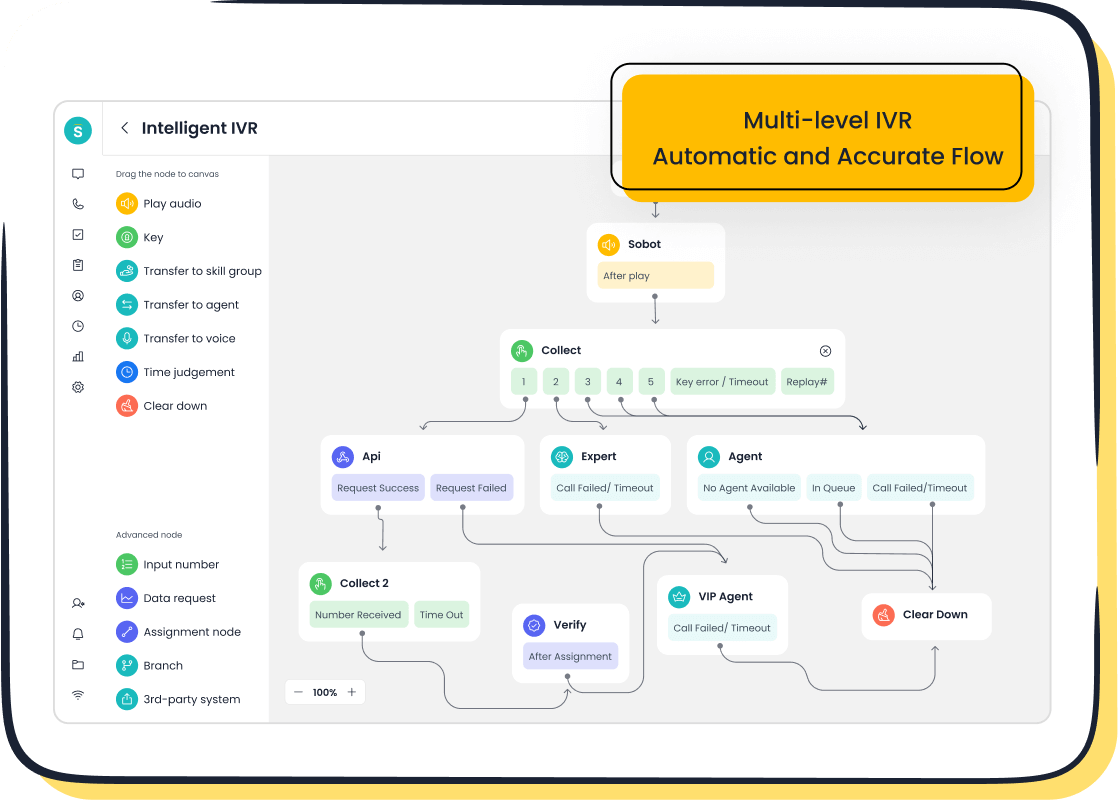
Tracking the right customer service metrics is essential for understanding and improving your team's performance. These metrics provide actionable insights into customer satisfaction, loyalty, and operational efficiency. Below are three key metrics you should monitor closely.
Customer Satisfaction Score (CSAT)
The Customer Satisfaction Score (CSAT) measures how satisfied customers are with your service. It is typically calculated by asking customers to rate their experience on a scale of 1 to 5 or 1 to 10. Higher scores indicate better satisfaction levels. For example, industries like healthcare and online retail often achieve CSAT benchmarks of 83% and 80%, respectively.
| Industry | CSAT Benchmark (%) |
|---|---|
| Healthcare (Non-hospital) | 83 |
| Online Retail | 80 |
| General Retail | 77 |
| Banking | 80 |
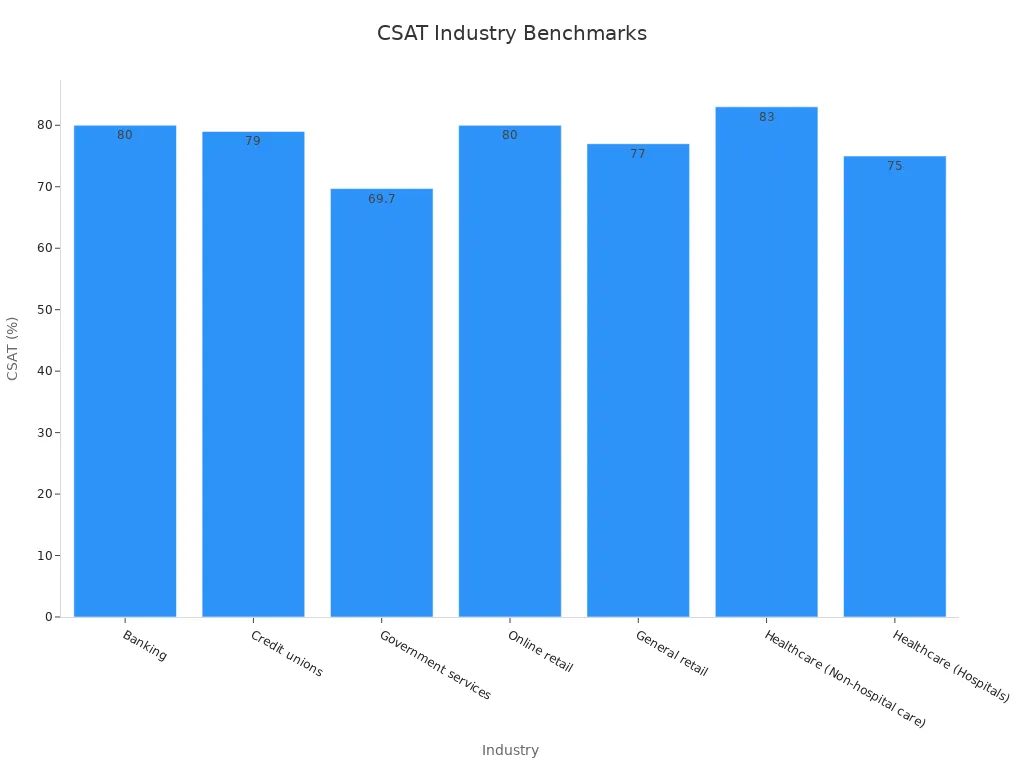
Sobot’s Voice/Call Center can help you track CSAT effectively. Its real-time monitoring and data analytics features allow you to gather customer feedback and identify areas for improvement. By focusing on CSAT, you can enhance customer satisfaction and loyalty.
Net Promoter Score (NPS)
The Net Promoter Score (NPS) evaluates customer loyalty by asking one simple question: "How likely are you to recommend our service to others?" Customers respond on a scale of 0 to 10, and their answers classify them as promoters, passives, or detractors. Studies, such as those by Reichheld (2003), highlight NPS as a reliable predictor of business growth and customer loyalty. For example:
| Study | Findings | Link |
|---|---|---|
| Reichheld (2003) | NPS scores from familiar customers provide insights into broader loyalty | Link |
| Keiningham et al. (2007) | NPS and customer satisfaction are equally effective in predicting growth | Link |
Using Sobot’s Omnichannel Solution, you can seamlessly collect NPS data across multiple channels, such as email, chat, and voice. This integration ensures a comprehensive understanding of customer loyalty and helps you tailor strategies to retain more promoters.
First Response Time (FRT)
First Response Time (FRT) measures how quickly your team responds to customer inquiries. Speed matters—90% of customers consider an immediate response "important" or "very important." Faster responses not only improve satisfaction but also encourage exchanges instead of refunds, positively impacting revenue.
- Almost 70% of customers judge service quality based on resolution speed.
- Quick responses lead to higher retention and satisfaction rates.

Sobot’s Voice/Call Center excels in reducing FRT with features like intelligent call routing and AI-powered voicebots. These tools ensure that customers receive prompt assistance, enhancing their overall experience.
By focusing on these metrics, you can create a customer-centric approach that drives satisfaction, loyalty, and operational efficiency.
Resolution Time
Resolution time measures how quickly your team resolves customer issues. It is one of the most critical customer service metrics because it directly impacts customer satisfaction and retention. Customers value their time, and resolving their concerns quickly shows that you respect it. Studies reveal that fast resolutions foster loyalty and trust. For example:
- The Net Retention Index (NRI) is 79 points when issues are resolved on the first call.
- If customers need to call back, the NRI drops to 60 points.
- Unresolved issues after multiple calls result in an NRI of -2 points, significantly increasing the risk of losing customers.
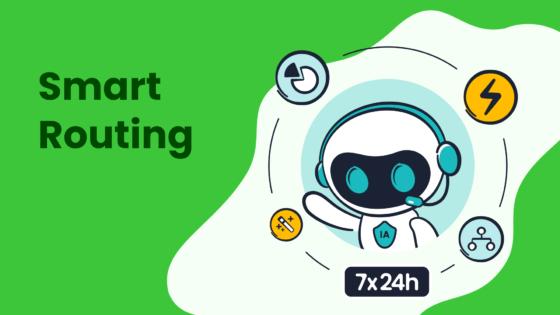
Sobot’s Voice/Call Center helps you reduce resolution time with features like intelligent call routing and real-time monitoring. These tools ensure that customers are connected to the right agent quickly, enabling faster resolutions. By focusing on this metric, you can enhance customer experiences and build long-term loyalty.
Customer Effort Score (CES)
The Customer Effort Score (CES) measures how easy it is for customers to resolve their issues. This metric is a powerful predictor of loyalty and satisfaction. Data shows that 94% of customers with low-effort interactions are likely to repurchase, while 96% of those with high-effort experiences are likely to switch to a competitor. Additionally, CES is 1.8 times more predictive of loyalty than CSAT and twice as predictive as NPS.
To improve CES, you need to simplify customer interactions. Sobot’s Omnichannel Solution excels in this area by unifying communication channels and automating repetitive tasks. For instance, AI-driven chatbots handle common queries, allowing agents to focus on complex issues. This approach reduces customer effort, leading to higher satisfaction and loyalty.
| Statistic | Finding |
|---|---|
| 94% | Customers with low-effort interactions are likely to repurchase. |
| 96% | Customers with high-effort interactions are likely to switch to a competitor. |
| 88% | Customers with low-effort experiences are likely to increase spending. |
Additional Metrics: Average Handle Time (AHT) and First Contact Resolution (FCR)
Average Handle Time (AHT) and First Contact Resolution (FCR) are essential customer service metrics that measure efficiency and effectiveness. AHT tracks the average time agents spend on each interaction. Shorter AHT indicates efficient service, which improves customer satisfaction. FCR measures the percentage of issues resolved during the first interaction. High FCR rates enhance satisfaction and reduce overall call volume, even if AHT increases slightly.
| Metric | Importance |
|---|---|
| Average Handle Time (AHT) | Indicates call center efficiency and effectiveness; shorter interactions improve customer satisfaction. |
| First Contact Resolution (FCR) | Drives operational efficiency and customer satisfaction; may initially increase AHT but reduces overall call volume. |
Sobot’s Voice/Call Center supports both metrics with features like AI-powered voicebots and smart call routing. These tools help agents resolve issues quickly and effectively, ensuring a seamless customer experience.
How to Measure Customer Service Performance Using Metrics
Tools and Platforms for Tracking Metrics
To measure customer service performance effectively, you need reliable tools and platforms that track key metrics. These tools provide insights into areas like customer satisfaction, response times, and agent productivity. Using a suite of metrics ensures a balanced view of your service quality. For example:
| Evidence Description | Key Insight |
|---|---|
| Using a suite of metrics highlights various aspects such as customer satisfaction. | A comprehensive view of service quality and areas for improvement is achieved. |
| Metrics should focus on tangible results related to customer satisfaction. | This ensures that the metrics are relevant to improving service quality rather than just costs. |
| Identifying areas where metrics fall short allows for targeted interventions. | This helps in determining which agents may need additional training or support. |
| Measuring customer service impact can enhance customer retention. | Satisfied customers are more likely to return and engage with the business. |
| Each metric reveals something about service quality. | A holistic approach to metrics provides better insights into overall performance. |
| Focusing on multiple areas prevents an unbalanced view of performance. | A well-rounded approach is necessary for true insight into customer service quality. |

Platforms like Sobot’s Voice/Call Center simplify this process. With features like real-time monitoring and intelligent call routing, you can track metrics such as first response time and resolution time seamlessly. These tools help you identify trends and make data-driven decisions to improve customer satisfaction.
Leveraging Sobot's Voice/Call Center for Real-Time Monitoring
Sobot’s Voice/Call Center offers advanced capabilities for real-time monitoring, making it easier to implement customer service metrics. Its intelligent IVR system routes calls efficiently, reducing wait times and improving first contact resolution. Real-time analytics allow you to monitor key metrics like average handle time and customer effort score as they happen. This ensures you can address issues immediately, enhancing the customer experience.
For example, Samsung used Sobot’s solutions to unify its communication channels and improve agent efficiency by 30%. This resulted in a 97% customer satisfaction rate. By leveraging Sobot’s tools, you can achieve similar results, ensuring your team delivers exceptional service consistently.
Integrating Metrics into Daily Operations
Integrating customer service metrics into daily operations ensures continuous performance monitoring and improvement. Regularly tracking metrics like QA scores and customer feedback helps you identify areas for coaching and skill development. Consistent tracking also reveals trends, enabling you to set specific, metric-based goals for your team. For instance:
- Technology aids in tracking and optimizing customer experience KPIs.
- Advanced analytics and customer feedback tools enable real-time performance monitoring.
- AI-driven insights support data-driven decision-making.
Sobot’s Omnichannel Solution simplifies this integration. Its unified workspace consolidates customer data, making it easier for agents to access information and resolve issues efficiently. By embedding metrics into your daily workflow, you can enhance both operational efficiency and customer satisfaction.
Analyzing Data for Actionable Insights
Analyzing customer service data is essential for turning raw numbers into meaningful actions. By examining metrics like Customer Satisfaction Score (CSAT), Net Promoter Score (NPS), and First Response Time (FRT), you can uncover patterns that reveal what your customers truly need. These insights allow you to make informed decisions that improve both customer satisfaction and operational efficiency.
For example, studies show that actionable insights from data lead to measurable improvements:
- Customer satisfaction scores increased by 15% in one quarter after a company simplified its app interface.
- NPS dropped from 45 to 32 when 60% of detractors cited slow response times as their main frustration.
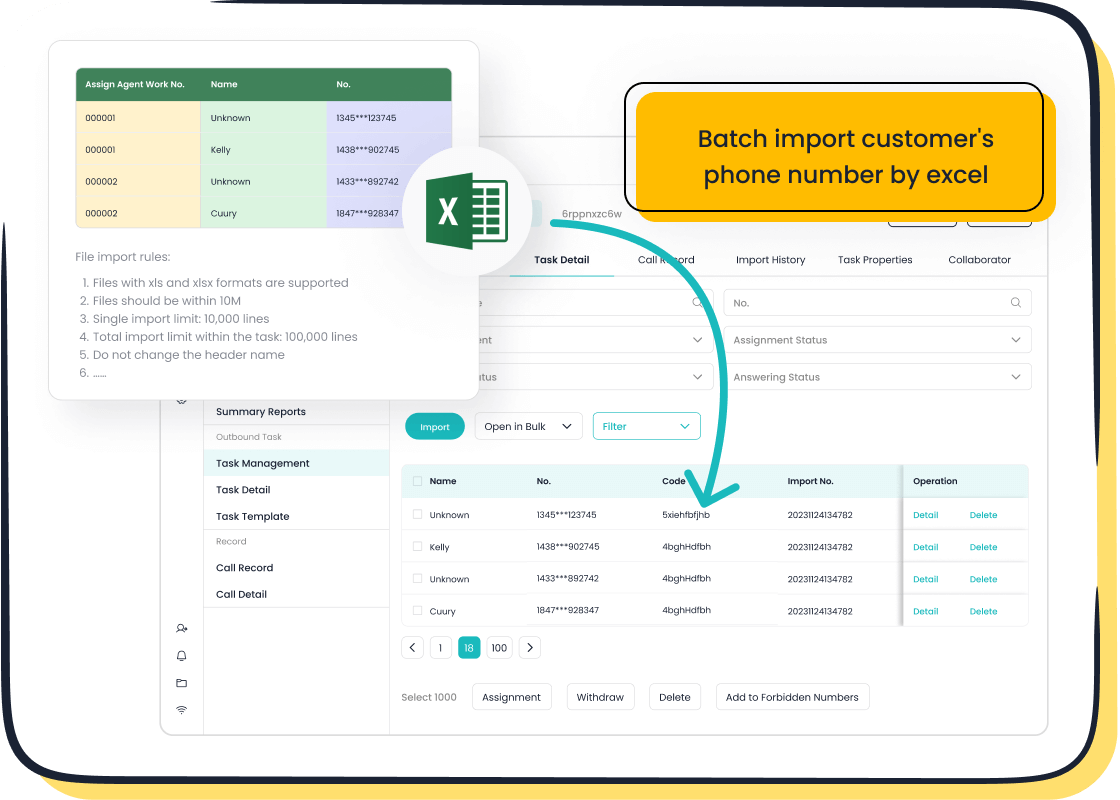
These examples highlight how analyzing data helps you identify specific areas for improvement. If response times are a recurring issue, you can implement tools like Sobot’s Voice/Call Center to reduce delays. Its intelligent call routing and real-time monitoring features ensure customers connect with the right agent quickly, improving their experience.
To make the most of your data, focus on trends rather than isolated incidents. For instance, if multiple customers mention difficulty navigating your website, this trend signals a need for a redesign. Sobot’s Omnichannel Solution simplifies this process by consolidating customer interactions across channels. This unified view helps you spot recurring issues and address them effectively.
When you analyze data regularly, you gain a deeper understanding of your customers. This knowledge enables you to refine your strategies, enhance customer loyalty, and achieve long-term success. By leveraging tools like Sobot’s solutions, you can transform data into actionable insights that drive measurable results.
Comparing and Prioritizing Customer Service Metrics
How Metrics Complement Each Other
Customer service metrics work best when used together. Each metric provides unique insights, but combining them creates a more comprehensive view of your performance. For example, operational data like call center volumes shows how busy your team is, while experience data, such as customer feedback, reveals how customers feel about their interactions. Together, these metrics highlight both the "what" and the "why" behind your service outcomes.
| Metric Type | Description | Importance |
|---|---|---|
| Operational Data | Metrics like sales revenue, call center volumes, and website visitors. | Provides a historical view of performance. |
| Experience Data | Customer feedback that explains their experiences and feelings. | Offers context and identifies gaps between perception and reality. |
| Combined Analysis | Using both O-data and X-data for a comprehensive understanding. | Enables organizations to focus on areas that will improve customer outcomes. |
By combining metrics, you can identify patterns and trends that individual metrics might miss. For instance, pairing Net Promoter Score (NPS) with Customer Effort Score (CES) helps you understand both loyalty and ease of service. Sobot’s Omnichannel Solution simplifies this process by consolidating data from multiple channels, giving you a unified view of your performance.
Strengths and Weaknesses of Each Metric
Each customer service metric has its strengths and weaknesses. Understanding these helps you use them effectively. For instance, NPS allows benchmarking against industry standards but may suffer from cultural bias. First Response Time (FRT) improves customer satisfaction but could compromise response quality if rushed.
| Metric | Strengths | Weaknesses |
|---|---|---|
| NPS | Allows for benchmarking against industry standards. | Limited context and cultural bias. |
| First Response Time (FRT) | Contributes to positive customer experiences and is simple to measure. | Speed may compromise quality of responses. |
| Average Resolution Time (ART) | Provides a holistic view of resolution times and emphasizes quality. | Longer times may not indicate poor service. |
| Customer Effort Score (CES) | Focuses on ease of resolution and can predict loyalty. | Limited context and interpretation challenges. |
| Customer Sentiment | Works without customer feedback and can be used in real-time. | Limited context and sentiment direction issues. |
| Conversational Quality (CQ) | Provides an objective assessment of interactions without customer input. | Limited to customer interactions, which may skew insights. |
Sobot’s Voice/Call Center addresses these challenges by offering tools like real-time monitoring and AI-powered voicebots. These features ensure that metrics like FRT and CES are tracked accurately without sacrificing service quality.
When to Prioritize Specific Metrics Based on Business Needs
Your business goals should determine which customer service metrics to prioritize. For example, if your focus is on reliability, tracking SLA compliance ensures you meet service delivery standards. If retention is a concern, monitoring Customer Churn Rate (CCR) helps identify why customers leave.
| Metric | Description | Impact on Performance Tracking |
|---|---|---|
| SLA Compliance | Measures adherence to service delivery standards. | Helps track reliability and commitment to customer service excellence, impacting customer satisfaction and trust. |
| Customer Churn Rate (CCR) | Percentage of customers who stop using the service over time. | Identifies issues affecting retention, enabling actions to promote loyalty and long-term profitability. |
| First Contact Resolution Rate | Percentage of issues resolved during the first interaction. | High rates contribute to positive experiences, reducing churn and enhancing brand reputation. |
| Customer Satisfaction Score | Measures customer feedback on specific interactions. | Higher satisfaction correlates with increased retention and profitability, aiding in performance tracking. |
Sobot’s solutions, such as the Omnichannel Solution, help you align metrics with your business needs. For instance, its unified workspace enables you to track SLA compliance and FCR seamlessly, ensuring your team meets customer expectations while driving long-term growth.
Using Sobot's Omnichannel Solution for Comprehensive Metric Analysis
Sobot's Omnichannel Solution empowers businesses to analyze customer service metrics comprehensively. By unifying communication channels, it provides a centralized platform for tracking and interpreting key performance indicators (KPIs). This integration simplifies data collection and ensures that you gain actionable insights to enhance customer satisfaction and operational efficiency.
The solution's advanced analytics capabilities allow you to monitor metrics like Customer Satisfaction Score (CSAT), Net Promoter Score (NPS), and Customer Effort Score (CES) in real time. For example, businesses using Sobot's Omnichannel Solution have achieved remarkable results:
| Case Study Description | Key Metrics Achieved |
|---|---|
| Reduced inbound discussion volume by 20% and increased positive feedback to 96% | 20% reduction in inbound volume, 96% positive feedback |
| Over 80% of answers are correct, with 95% customer satisfaction | 80% correct answers, 95% satisfaction |
| 22.2% of customer questions answered autonomously, CSAT score of 97% | 22.2% self-service, 97% CSAT |
| 85% of problems solved, 99% customer happiness | 85% problem resolution, 99% happiness |
| Sign-off rate increased by 35%, COD collection rate increased by 40% | 35% sign-off increase, 40% COD increase |
These results highlight the solution's ability to streamline operations and improve customer experiences. The platform's AI-driven automation handles repetitive tasks, freeing agents to focus on complex issues. This reduces response times and enhances first-contact resolution rates.
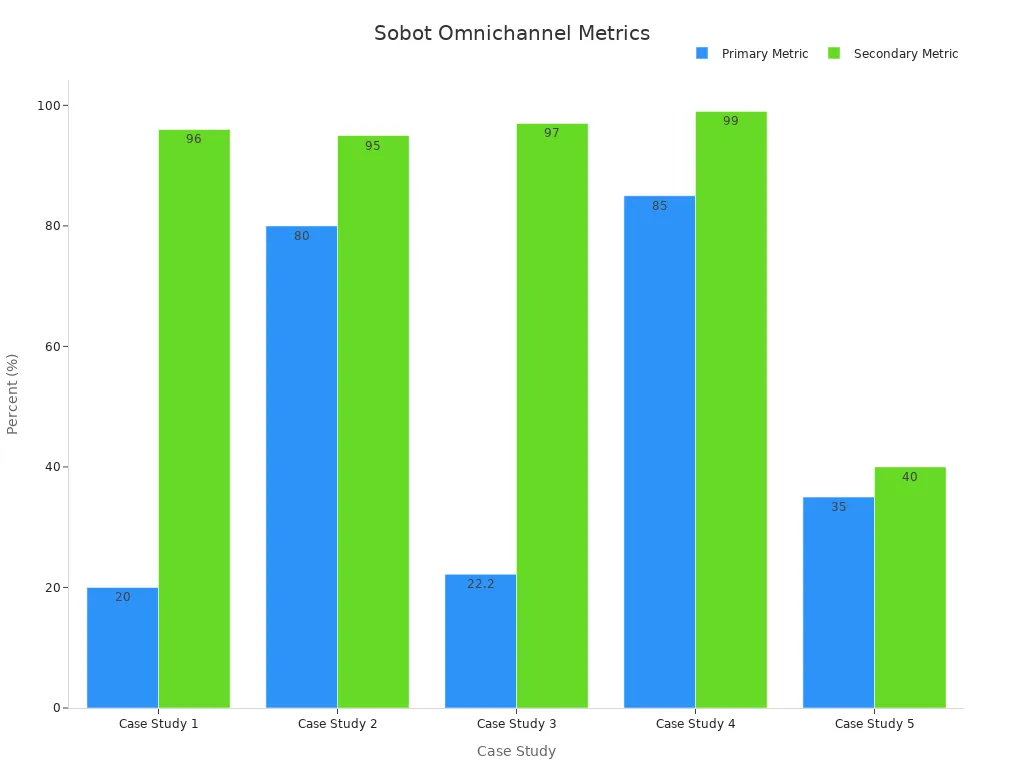
Sobot's Omnichannel Solution also provides predictive insights, helping you identify trends and optimize team performance. For instance, its unified workspace consolidates customer data, enabling agents to deliver personalized support. This approach not only boosts satisfaction but also fosters long-term loyalty.
By leveraging Sobot's Omnichannel Solution, you can transform raw data into meaningful strategies. This ensures your business stays ahead in delivering exceptional customer service while achieving measurable growth.
Best Practices to Implement Customer Service Metrics
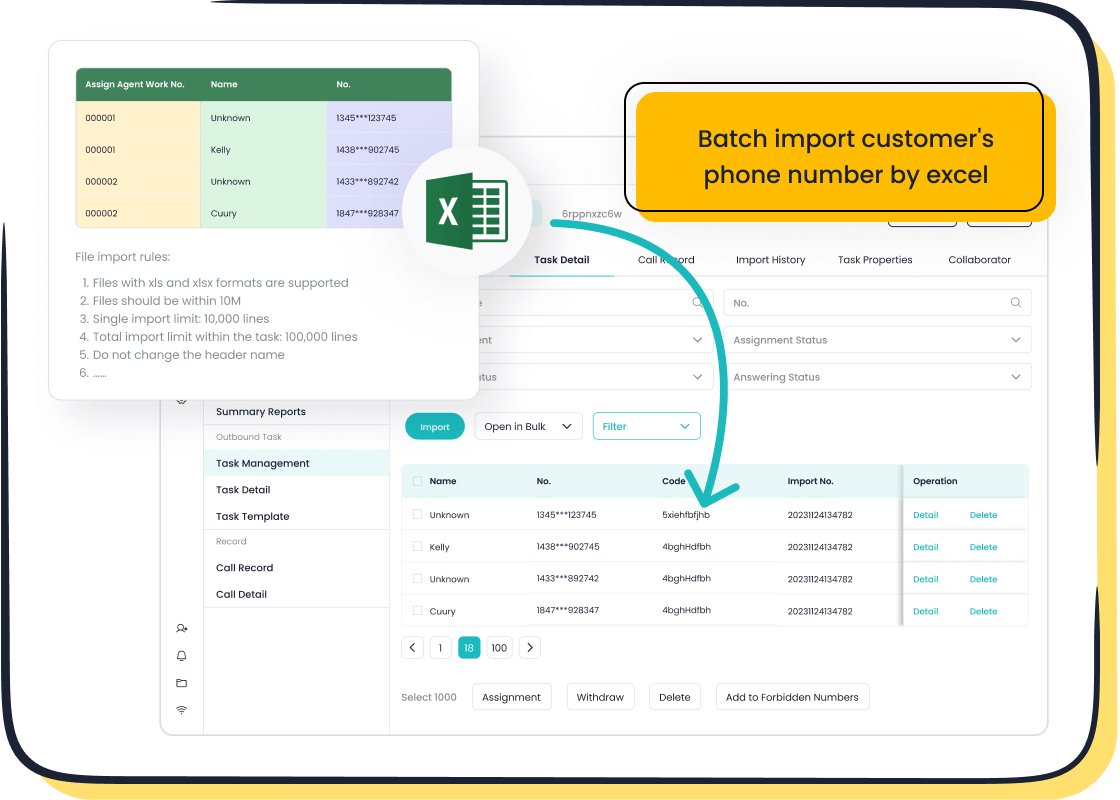
Regularly Track and Monitor Metrics
Consistently tracking customer service metrics ensures you stay informed about your team's performance and customer satisfaction levels. Regular monitoring helps you identify areas needing improvement and optimize strategies to enhance the overall experience. For example, running CSAT surveys every 3–4 months provides a clear picture of customer sentiment. Triggering CES surveys immediately after interactions captures fresh feedback, offering actionable insights.
Customer service reports act as a valuable tool for understanding consumer sentiment and assessing employee performance. They provide a comprehensive view of feedback, enabling better problem diagnosis and strategic solutions.

Sobot’s Voice/Call Center simplifies this process with real-time analytics and intelligent call routing. These features allow you to monitor metrics like First Response Time (FRT) and Resolution Time seamlessly, ensuring your team delivers exceptional service consistently.
Set Clear Goals Based on Metric Insights
Setting clear, data-driven goals ensures your customer service strategy aligns with business objectives. Organizations that define objectives collaboratively often see improved alignment with their overall strategy. Engaging stakeholders in the goal-setting process establishes clear roles and responsibilities, enhancing data management.
- Aligning data initiatives with business goals ensures a focus on outcomes like customer satisfaction and operational efficiency.
- Data-driven organizations adapt strategies faster, responding to market changes more effectively than competitors.
For instance, if your metrics reveal a high Customer Effort Score (CES), you can prioritize simplifying customer interactions. Sobot’s Omnichannel Solution provides predictive analytics to help you foresee customer behavior and set actionable goals. This approach ensures your team focuses on measurable outcomes that drive satisfaction and loyalty.
Train Teams to Act on Metric Data
Training your team to interpret and act on metric data is crucial for improving performance. Educating employees ensures a shared understanding of metrics and their application. For example, targeted training programs can address skill gaps, reducing inefficiencies. If your team misses 40% of deadlines, focused training could lower that rate to 20% or even 5%.
"A marketing team noticed campaigns led by certain individuals consistently outperformed others. By restructuring teams to include these high-performing individuals as mentors, the department increased campaign success rates by 25%."
Sobot’s AI-powered tools, such as its Voice/Call Center, enhance training efforts by providing real-time analytics and actionable insights. These tools help your team focus on high-value activities, improving productivity and customer satisfaction. By leveraging these resources, you can ensure your team turns data into strategies that deliver measurable results.
Use Sobot's AI-Powered Tools for Continuous Improvement
Continuous improvement in customer service requires tools that adapt to your evolving needs. Sobot’s AI-powered solutions provide the perfect foundation for this. These tools analyze customer interactions in real time, offering actionable insights to refine your strategies. For example, Sobot’s Voice/Call Center uses AI-driven voicebots to handle repetitive queries, allowing your agents to focus on complex issues. This not only improves efficiency but also enhances customer satisfaction.
AI-powered analytics from Sobot help you identify trends and patterns in customer behavior. For instance, if customers frequently ask about a specific product feature, you can proactively address this in your communication. Predictive analytics also allow you to anticipate customer needs, ensuring your team stays one step ahead. By leveraging these insights, you can reduce response times and improve first-contact resolution rates.
Sobot’s tools also support team training and development. Real-time monitoring highlights areas where agents may need additional coaching. This ensures your team consistently delivers high-quality service. Additionally, the platform’s unified workspace consolidates customer data, making it easier for agents to access relevant information during interactions.
By integrating Sobot’s AI-powered tools into your operations, you create a feedback loop that drives continuous improvement. This approach not only enhances customer experiences but also boosts loyalty and retention. Businesses like Samsung have already achieved remarkable results, such as a 30% increase in agent efficiency, by using Sobot’s solutions. You can achieve similar outcomes by adopting these advanced tools.
Leverage Customer Feedback to Refine Strategies
Customer feedback is a goldmine for refining your service strategies. Listening to your customers helps you understand their needs and expectations. Companies like Koçtaş increased their Net Promoter Score (NPS) by 60% in just nine months by implementing AI-driven feedback loops. Similarly, Sharekhan reduced churn and improved NPS by 30 points by addressing concerns from 96% of unhappy customers.
Sobot’s Omnichannel Solution makes collecting and analyzing feedback seamless. Its unified workspace consolidates feedback from multiple channels, such as email, chat, and voice. This ensures you capture a comprehensive view of customer sentiment. For example, if customers frequently mention long wait times, you can use Sobot’s intelligent call routing to address this issue.
Feedback also informs strategic decisions. Uber, for instance, uses continuous feedback to improve retention and satisfaction. You can adopt a similar approach by using Sobot’s analytics tools to identify recurring themes in customer feedback. This allows you to prioritize improvements that have the greatest impact on satisfaction.
By acting on customer feedback, you show your customers that their opinions matter. This builds trust and loyalty, ensuring long-term success. Sobot’s solutions empower you to close the feedback loop effectively, helping you deliver exceptional service experiences.
Measuring customer service performance requires a balanced approach that combines multiple metrics. This strategy ensures a comprehensive understanding of your team's strengths and areas for improvement. Metrics like CSAT and NPS reveal customer sentiment, while FRT and resolution time highlight operational efficiency. Together, they guide data-driven decisions that improve service quality and drive business growth. Focusing on a single metric risks neglecting critical areas, such as long-term customer loyalty or product quality.
- Key Benefits of Combining Metrics:
- Tailor services by understanding customer needs through CSAT and NPS.
- Identify inefficiencies by tracking first-response and resolution times.
- Boost loyalty with CES, which measures ease of issue resolution.
Sobot’s solutions, such as the Voice/Call Center and Omnichannel Solution, simplify metric implementation. These tools reduce waiting times by 35% and ensure seamless omnichannel integration, helping businesses achieve 70% of revenue from upgrades.
| Statistic Description | Value |
|---|---|
| Percentage of business from upgrades | 70% |
| Reduction in waiting times | 35% |
| Benefit from omnichannel solutions | Yes |
By leveraging Sobot’s advanced tools, you can enhance customer satisfaction, improve loyalty, and achieve measurable success.
FAQ
What are the most important customer service metrics to track?
Tracking metrics like Customer Satisfaction Score (CSAT), Net Promoter Score (NPS), First Response Time (FRT), and Customer Effort Score (CES) is essential. These metrics provide insights into customer satisfaction, loyalty, and operational efficiency. Sobot’s Voice/Call Center simplifies tracking these metrics with real-time monitoring and analytics.
How can I improve my team’s First Response Time (FRT)?
You can improve FRT by using tools like Sobot’s Voice/Call Center. Features such as intelligent call routing and AI-powered voicebots ensure customers connect with the right agent quickly. Faster responses enhance customer satisfaction and reduce churn rates.
Why is the Customer Effort Score (CES) important?
CES measures how easy it is for customers to resolve their issues. Low-effort interactions lead to higher satisfaction and loyalty. For example, 94% of customers with low-effort experiences repurchase. Sobot’s Omnichannel Solution reduces effort by unifying communication channels and automating repetitive tasks.
How does Sobot help businesses measure customer service performance?
Sobot offers tools like the Voice/Call Center and Omnichannel Solution. These platforms track key metrics such as CSAT, NPS, and FRT. Real-time analytics and AI-driven automation provide actionable insights, helping businesses improve customer satisfaction and operational efficiency.
Can customer service metrics drive business growth?
Yes, metrics like NPS and CSAT directly impact growth. For instance, companies with high NPS scores grow faster by retaining loyal customers. Sobot’s solutions help businesses optimize these metrics, ensuring better customer experiences and long-term success.
See Also
Enhancing Call Center Efficiency Through Effective Monitoring
Top Strategies for Effective Call Center Quality Management
Ten Strategies to Improve Customer Satisfaction in Live Chat
Effective Management Techniques for Live Chat Agents
Increasing Efficiency with AI-Powered Customer Service Solutions
